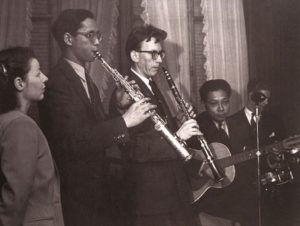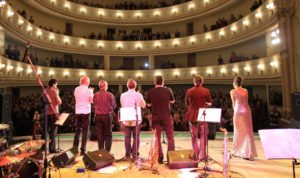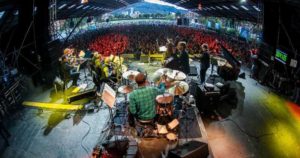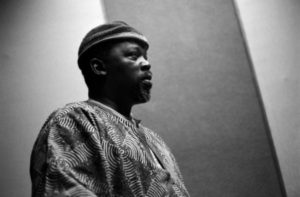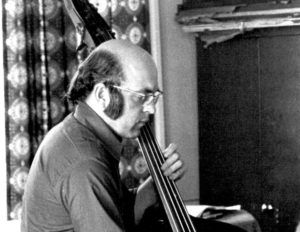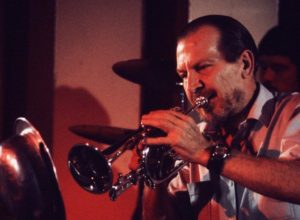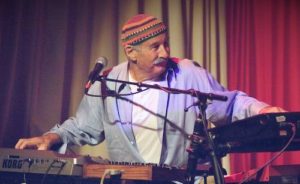Jazz in Mexico
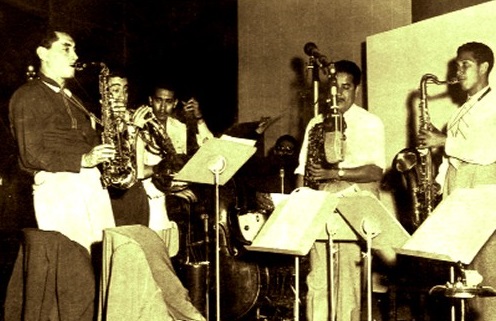
Despite its close proximity to jazz’s birth place, jazz has never been especially popular in Mexico. There are though traces of Mexican influence identifiable in the background and biographies of jazz’s earliest practioners.
New Orleans hosted a World Cotton Fair in 1885, to which Mexican president Porifiro Diaz sent a Mexican Cavalry Band, that is said to have been the hit of the Fair, with their mixture of danzas, danzones and marches. Sheet music of their most popular numbers sold well in the city.
The clarinet-playing brothers, Luis ‘Papa’ Tio (1866-1908) and Lorenzo Tio, were both born in Mexico. who along with the latter’s son, Lorenzo Tio Jr (1893-1933) would become perhaps the music’s first true educators, bring knowledge of classical music theory to jazz. Junior taught Sidney Bechet, Albert Nicholas, Barney Bigard, Jimmy Noone and Johnny Dodds, so essentially all the pre-eminent clarinettists of the era. The Tio family were actually originally from Catalonia in Spain, but had lived in New Orleans since the 18th century. They spent a couple of decades in Mexico from 1860 to around 1878 (not coincidentally the period around the American Civil War), but the Tios had no ancestral tie to the country.
Jelly Roll Morton spent time in Mexico, telling musicologist Alan Lomax that he composed his famous piece ‘The Pearls’ in Sonora, Mexico. When describing how he ‘invented’ jazz, he referred to the ‘Spanish Tinge’ that he felt was integral to jazz. He was certainly raised by Cuban godparents, and taugh habaneras by a Mexican guitar teacher. New Orleans during the years in which jazz developed was decidely multi-cultural. Mexican, Cuban and Haitian music would have been familiar to jazz’s earliest performers, but it is hard to designate exactly what influence Mexican music, in particular, had.
Morton and others are known to have performed in Mexico as early as 1921, and probably before. There is sadly no recorded evidence of jazz in Mexico until the appearance of a number of big bands, which clearly show the influence of the music from the 1930s. Ray Montoya (1914-1960) and Luis Arcaraz (1910-1963) were among the leading band leaders of the time. Tampico-born bandleader Juan Esquivel (1918-2002) incorporated many elements of jazz into his distintive lounge music, selling millions of records in America and Europe in the process.
Bass player Abraham Laboriel (born 1948) has been so ubiquitous a session musician over a five decade career that it is hard to discern his jazz career amongst his countless appearances on records by everyone from Michael Jackson and Aretha Franklin to Barry Manilow and Dolly Parton. However, early in his career, Laboriel can be heard on some of Al Jarreau’s best albums of the 1970s and 80s, as well as on sessions with Gary Burton, George Benson, Lalo Schifrin and Quincy Jones.
This is very sketchy at the moment, much more to come…
